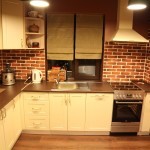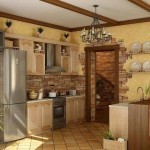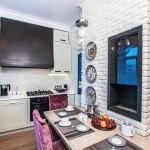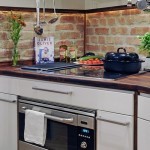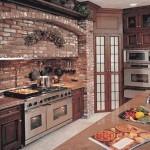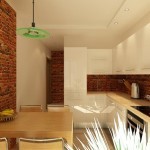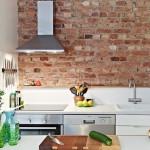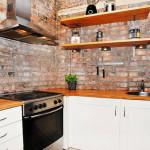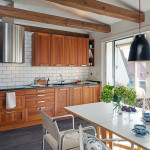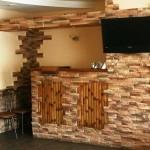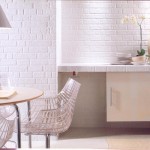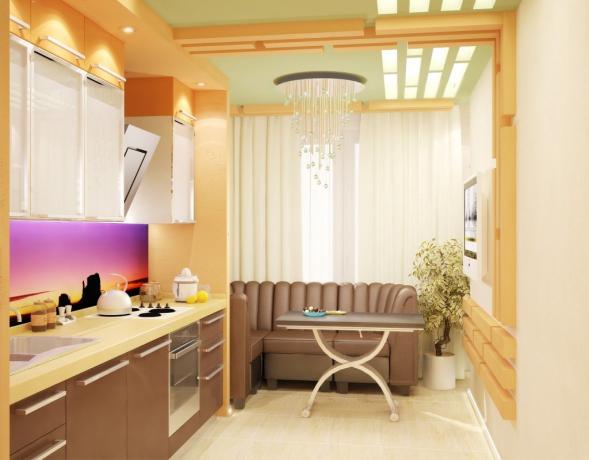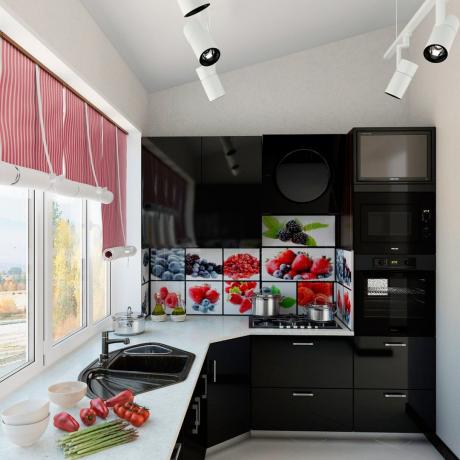Content
-
1 Features of brick walls
- 1.1 The advantages of bricks
- 1.2 Disadvantages of clay silicate blocks
- 2 Recommendations for "use"
- 3 We lay out the wall ourselves
- 4 Conclusion
People's priorities change over time, drywall in the interior is no longer so popular, and the demand for plaster is gradually slowing down. Of course, this is not due to the quality of materials, but to new ideas for interior decoration.
For example, the fashion for bricks recently broke out, you thought about a rough building material that is perfect for building houses. What is the beauty of such an innovation?
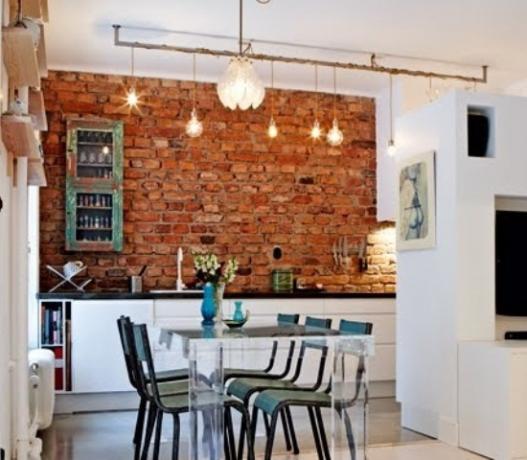
A brick wall gives a certain status to the room
Features of brick walls
It should be clarified in advance that we are not talking about those clay blocks that are produced in a rough environment, without subsequent finishing. Namely, about decorative products that have in their assortment many shades of shapes and sizes.
Such a brick wall in the interior of the kitchen can really become one of the main objects of the room, which will attract attention, bring some "flavor". Although, of course, any subject has not only positive aspects, but also negative ones. To make it easier for you to navigate, we will list them.
The advantages of bricks
- Saving money on finishing. Decorative bricks do not need to be refined with any materials, leveled or polished. Its appearance is what makes the interior interesting.

Clear definition of the dining area
- Brickwork in the interior of the kitchen clearly emphasizes everything that is on it: wall-mounted kitchen cabinets, paintings, shelves. But even if you have doubts, pick up a roller and a brush and create a drawing on your wall. It is relevant to paint on a brick in the style of street graffiti.
- Clear external structure that conveys the essence of the material. Brick is not drywall, which must be finished.
- A brick-walled kitchen is eye-catching, so it's easy to create clear boundaries between the dining area and the work area.
- The coziness that the brickwork creates in the kitchen is indescribable. Look at the photo if you don't believe it yourself.
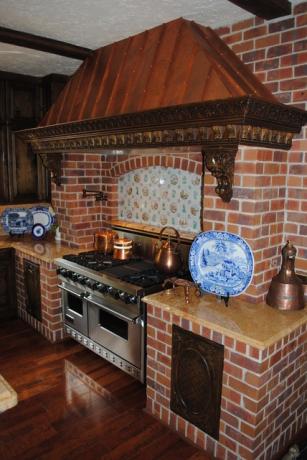
A place for cooking under a brick - the illusion of a volumetric fireplace
- Simple masonry that does not require any special tools or any construction skills from you.
- Brick combines: moisture resistance, heat and sound insulation.
- Price - as we said earlier, this material is affordable, which means it is popular.
Disadvantages of clay silicate blocks
- Good should be in moderation. If you decide to brick the entire kitchen, it can strain your eyes and create discomfort. It will feel like you are not in the kitchen, where delicious dishes are prepared, but in the basement.
- Decorating the kitchen with brick is an interesting option, but not practical. In the future, a lot of dust is clogged in seams and crevices, especially near the work surface. Therefore, using it as an apron is undesirable.
- Even a light brick wall requires a lot of fixtures, the material by its nature "eats" too much light, making it dimmer.
If you are not afraid of these disadvantages of brickwork, then you can continue reading the article. Next, we'll talk about how to best fit the material into kitchen interior design.
Recommendations for "use"
What can be special when you are going to place decorative bricks in your kitchen interior?
In fact, everything.
- First of all, pay attention to where your window light falls, exactly where the sun shines. This answer to the question - where should the masonry be erected from blocks.
- It is best to separate other finishing materials with bricks. For example, it will look great as some kind of decorative columns that separate the wallpaper from the plaster.
- Looking to add even more flair to your kitchen? Place blocks in some places not along the wall, but perpendicularly. This way, you get eye-catching squares that can be used as projections for decor items.
- Natural brick laying is encouraged at the initial stage kitchen renovationwhen an apartment or house is just being prepared for housing.
In other cases, it is more relevant to purchase brick panels for the kitchen, made of the most "light" materials. For example, study the option with fiber cement panels and plastic.

The apron is made of decorative stones, this material is not afraid of anything: no moisture, no temperature, no dirt
Note!
Fiber cement siding can be used both for exterior walls of a house and for interior work.
- Brick and plaster are best combined, materials that are essentially close, have a certain harmony, which allows them to look perfect with each other.
- Decorative brick in the kitchen will look good with a different type of blocks, for example, if the premises are combined with the living room, and there is a fireplace. Also in country houses, such materials are used to lay out stoves.
We lay out the wall ourselves
And now a few skillful lessons from experts who will help you understand the brickwork process and do all the work yourself.
First you need to purchase everything you need for installation:
- Cement.
- Decorative brick.
- Master OK.
- Putty knife.
- Building level.
As you can see, the main waste will be associated with the finishing material.

If you will be building a brick partition, be sure to pull the string to level the surface
Note!
Again, if you decide to install wall panels for the kitchen under a brick, then you will not need either cement or a trowel, as, in fact, a spatula.
The main materials are panels and the tool is a drill and screwdriver.
Now let's move on to preparing the wall for cladding:
- All protruding products from the wall should be removed: nails, hooks, screws, etc.
- Old finishing materials are also removed: PVC panels, wallpaper, wooden paneling and drywall. Unless it is installed as a partition.
- If the walls are wooden, then they should be treated with an antiseptic, if they are concrete, then they are not subject to any preliminary treatment.
When the surface of the wall to be finished is finally clean and ready for cladding, you can start laying bricks:
- Mix the solution in a bucket or similar container.
- Lay a thin line on the wall at the very bottom. Not necessarily from corner to corner right away, you can spread the mixture gradually.

Do not be afraid that the solution will dry quickly, the main thing is not to apply in a thick layer.
- Lay down the first complete brick and tap it a little with a trowel. This is necessary in order to remove excess solution. So the whole row is laid out to the end.
- If the last brick had to be cut, great - spread the beginning of a new row from this edge. This is due to the fact that a brick wall in the kitchen will look more interesting if a checkerboard layout is used, and not a block over a block. It is also the most reliable way.
Important!
If all the bricks are solid, then start the next row with half a block. To do this, you will have to either cut it off exactly or split it.
- After the entire wall is ready, the cement must be allowed to dry. Just do not forget to remove all excess solution from the surface of the material, so that later you do not have to beat it off with a chisel.
- Finally, the final step is to putty the seams. To do this, you can purchase a special pistol with a sealant, which will apply a thin, even layer of putty between the bricks.
Or use a thin spatula and grease gradually, removing excess from the brick surface.
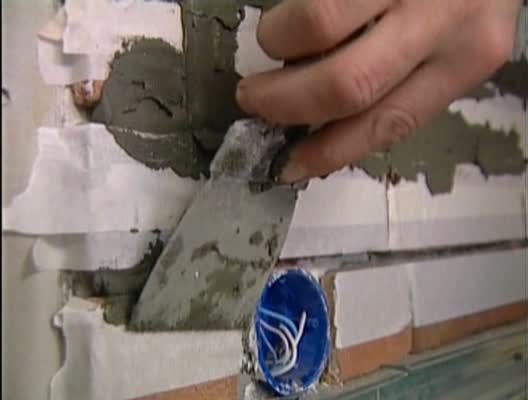
You can seal the blocks with masking tape to avoid getting the solution on the surface
As you can see, it is easy to create a kitchen interior with a brick wall, and no special care is required. Therefore, the option can be considered not only unusual, but also practical. Although, as they say, to each his own.
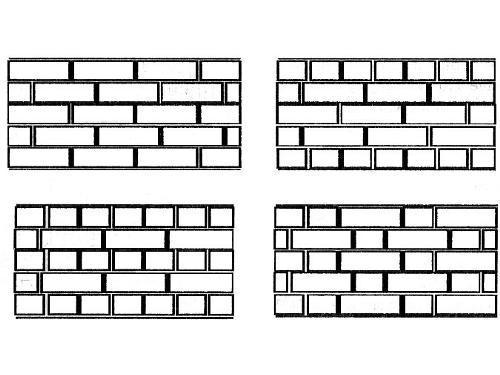
The figure shows several options for different brick laying
Conclusion
If you doubt that you will be able to do the above work on your own, then a video can help you: a kitchen made of bricks with your own hands. Here you will surely find some more useful tips that will dispel all your doubts. You can also get acquainted with different types of masonry.
Gallery

